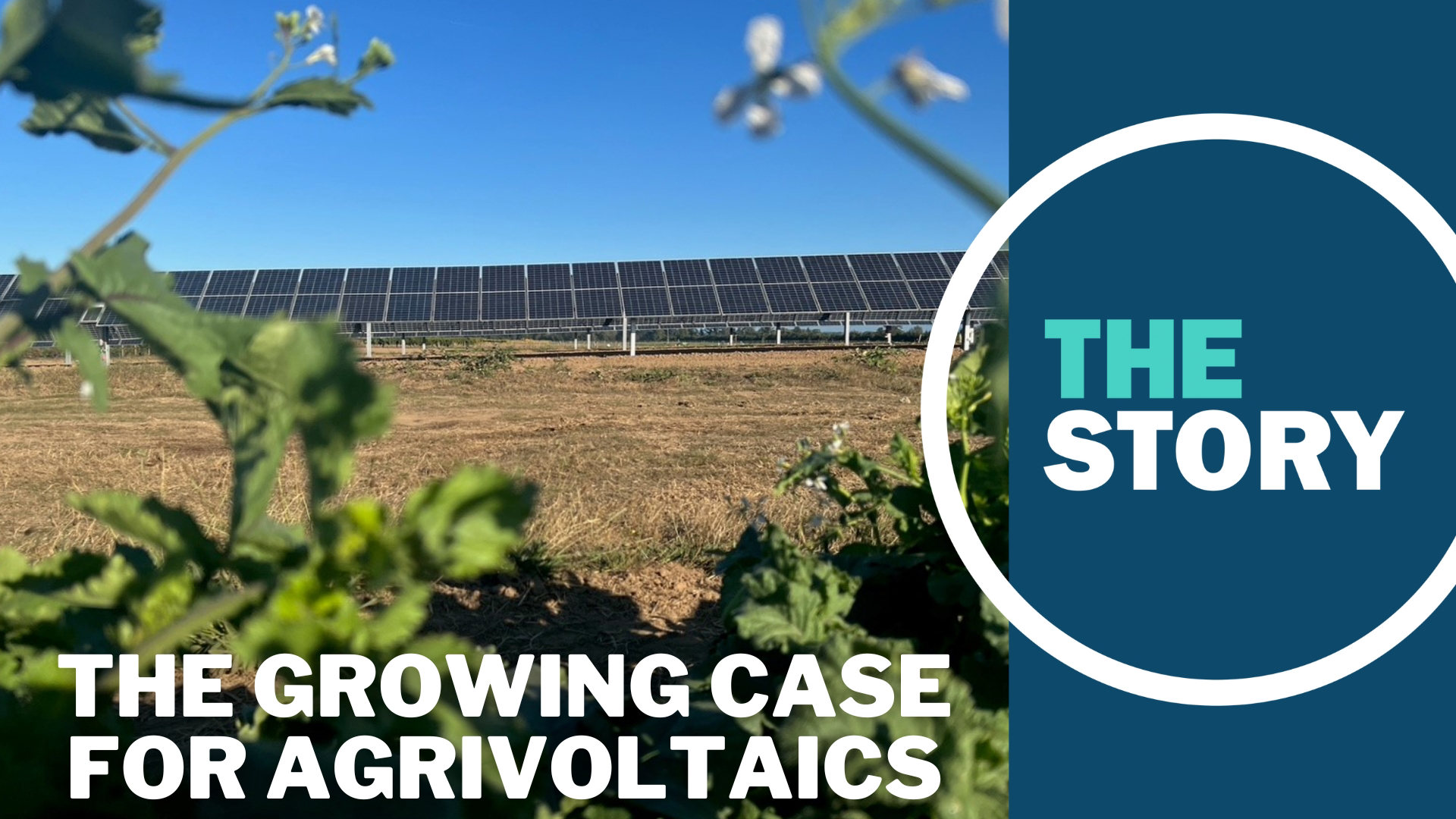AURORA, Oregon —
On a small research farm outside of Wilsonville, Chad Higgins feels like he’s watching the future of farming and energy production unfold. Higgins, a biological and environmental engineering professor at Oregon State University, oversees one of the largest experiments in agrivoltaics in the world.
Agrivoltaics, Higgins explained, “is the co-location of both solar energy harvesting and agricultural production on the same piece of land for mutual benefit.”
It’s that mutual benefit that has Higgins so excited for the potential of agrivoltaics.
Many crops actually get more sunlight than they can process. When they do, they use water to cool themselves off and keep their leaves from dying. But that means they become more water intensive and agriculture already accounts for more than 70% of global water use.
To regulate the amount of sunlight a plant receives, you could erect a simple shade structure. Or, you could put that extra sunlight to use with solar panels, generating something the world is in dire need of anyway: clean electricity.
When you do, Higgins said his research has shown that you get multiple benefits.
Using agrivoltaic systems, Higgins has grown tomatoes with bigger yields and dry beans with higher protein content. He's raised sheep in pastures under solar panels and, though the sheep don’t grow any faster, he’s able to graze more of them per acre because the grass grows more quickly.
He’s also found that, because the plants cool the environment around them, the solar panels don’t run as hot and produce energy more efficiently.
“More plant productivity, better quality crops, more nutritious crops, less water use, more (efficient) energy use,” Higgins said, describing all the positive impacts of solar and farming. “It's a true synergy when you put them together.”
Over the past several years, Higgins’ research has focused mostly on small-scale agrivoltaic systems, but the experiments at the North Willamette Research and Extension Center represent the first time he’s made use of the system on anything resembling a working farm.
“We showed that the plane could fly,’ he said, “but we have to figure out how to develop a commercial jetliner now.”
Several thousand solar panels line the 5-acre plot, and each row of panels tilts to follow the sun over the course of the day. More importantly, Higgins explains that the rows are spaced so that, when the panels go fully vertical, there’s enough space for farm equipment to pass through.
A 2020 paper, co-authored by Higgins, found that converting 1% of American farmland to agrivoltaic systems could cut annual emissions equivalent to removing 71,000 cars from the road. It would also create more than 100,000 jobs, mostly in rural communities, according to the paper.
But it could also potentially head off a different looming crisis.
The world’s capacity to support human life is estimated to be around 10 to 12 billion people, a threshold humanity is predicted to reach before the end of the century. The mitigating factors: access to an adequate food supply and clean water.
“If you assume current course and we don't really come up with any new technologies or paradigm shifts, then the projections look kind of gloomy,” Higgins said. “If you include dual use agrivoltaics as a methodology in your projections, you actually come up with a future that's sustainable.”
Of course, the practice is not all upside. Agrivoltaic systems won’t work on every landscape or with every crop. Working with insurance companies to cover solar panels in fields where farm equipment operates is another obstacle to overcome, Higgins said.
The upfront costs are also sizable, though Higgins said his research has shown that the systems pay for themselves within about a decade. After that, they add to the farmers’ bottom line.
“I don't have to convince people to have a different ethical or political viewpoint or anything. It's a profitable enterprise to do it,” he said. “So I'm more about changing pockets than I am about changing mind.”
That's just one of the reasons that Higgins is confident that agrivoltaic systems will be widely deployed within the next 10 years.
“I see a path to a future where we're not under exigent threat of self-destruction."

